Tips for beginner DJs
DJ advice for beginners from professionals
So you want to become the next Calvin Harris or Carl Cox? This beginners guide to DJ-ing is a great place to start! While the pro DJs make it look so easy real professional Dj-ing is anything but.
I wanted to create the ultimate list of advice for beginner DJs to really understand everything you should know when you’re a newbie DJ.
What DJ skills to learn first, what experiences you are likely to have and what you can do to move from beginner DJ to pro DJ.
I’ve put everything you need to know into a single easy to follow article. Make it your DJ bible for beginners.
If you have any more tips you think I should add do let me know. I’ll be updating this page regularly with more DJ Advice.
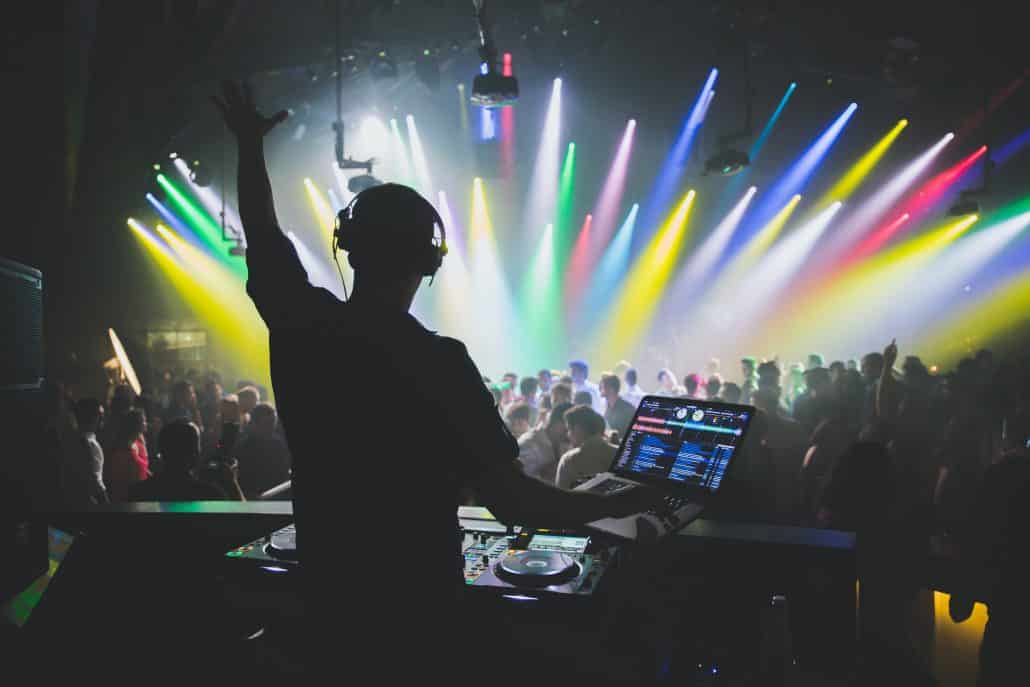
- Learn to beat match
- Don’t rely on hardware to sync your tracks
- Get the right equipment for your skills
- Learn to mix multiple tempos of music early on
- Start with simple mixing techniques
- Learn to use frequency volumes to enhance your mixes
- Practice DJing with the tunes you love
- Practice makes perfect, so stick to it
- Get DJ mixing apps on your phone to practice when you’re on the move
- Record some mixes and get feedback from your friends
- Get a Mix Cloud account and upload your mixes
- Join some DJ forums and network
- Understand how to read a crowd when DJing
- Take the crowd on a journey
- Don't run before you can walk
- Invest in a pair of high quality and durable headphones
- Master every function on your equipment before you upgrade
- Try back to back DJ mixing with a friend
- Pay attention to the VU meters
- Always count the beats
- Start small by playing at your friend’s parties
- Film yourself in action so you can identify bad habits
- Look for ways to fine tune your setup every day
- Check your ego at the door
- Practice a warmup set before you DJ at a party
- Put some content on social media and listen to the feedback
- Keep a clear head whenever you're DJ-ing (leave the drinks until later)
- Don’t create MP3s using your live mixes: Perfect them at home instead
- Give yourself a DJ name if you want to catch the eye
- Watch the pros at work and look at how they mix
- Find your favourite DJ setup from vinyl, CD decks, and digital DJing
- Read the maintenance hints and tips on your DJ kit
Moving from one track to the next effortlessly is what every DJ needs to do, this is your bread and butter. While the debate rages on about using Sync or not, there’s one thing every DJ should be able to do and thats beat match. There is no excuse if you can’t do it, every professional DJ can do it. Besides its a great thing to learn and you’ll be very pleased with yourself when you’ve mastered it.
One of the greatest reasons to learn beat-matching is that it’ll help tune your ears to ever nuance of the tracks you’re playing. I know from 20+ years of experience exactly how a track is slipping out of sync and what to do to recover it. These days there are extra visual tools beyond using your ears so make use of all the tools at your disposal.
Here’s an awesome YouTube tutorial from DJ Phill Harris. Well worth taking a moment to check out the basics of beat matching.
Start off with some easy tracks, just beats and high hats on a loop. Make sure the tracks have different tempos. Listen to how one slowly slips out of sync with the other, use the tools to bring it back in to alignment and adjust the track’s tempo. Practice it until it’s second nature, Try tracks of different tempos once you feel confident.
The sync function is pretty cool, but just with every fancy bit of software it’s only as good as the DJ using it. Any DJ will tell you that syncing doesn’t always work. Sometimes the software gets it wrong, especially on more complex tracks and genres like hip hop or drum and bass.
If you can’t beat match then what will you do when syncing fails you? And rest assured it will one day!
I’ll be honest and say I love the sync button. It saves time for me allowing me to get much more creative with my mixes and loops, but I use it because I know I can beat match well and I know what to do when sync doesn’t work well. I can also get super creative and play tracks out of sync on purpose!
You can spend as a much as you like on a mixer, but that doesn’t mean you should. You want to make sure you get the most out of some entry level kit before splashing the cash.
You’re a beginner, so having an overwhelming number of knobs and dials to play with is not going to help you be better DJ. It’ll only confuse and panic you when you should be learning to beat match and understand your music.
There’s two great reasons to start simple with DJ equipment
Simple DJ equipment costs less
Its an obvious one but when you’re starting out you’re on a tighter budget than when you’re a world famous DJ. So don’t both with all those extra fancy features just yet.
Keep it simple and you’ll save both money and learn faster. A mixer with a decent cross fader, volume controls for high, mid and low frequencies and good headphone cue mixing capabilities is all you need right now.
Similarly digital controllers, vinyl or CD turntables come in all shapes and sizes these days with so many extra features for looping and creative mixing, but right now you don’t need any of that. So don’t waste your money on equipment that wont help you right now.
You will learn much faster with simple DJ equipment
If you keep it simple you’ll learn the basics much MUCH quicker. Its a simple fact because you’re not over-complicating what you’re trying to achieve. Right now its just about getting the basics right and you’ll achieve this in half the time with less distractions.
Its far too easy to get side tracked with loops, filters, hot cues, key syncing, the list is endless. You don’t want any of that right now. You can move on to exploring those when you’re a master at the basics.
I’ve seen plenty of wannabe DJs who still haven’t mastered the basics but think they’re God’s gift to DJ-ing because they can loop and filter tracks beyond all recognition. None of those tricks make you a “good DJ”.
Drum and bass is cool, hip hop is cool, but they’re very different styles when it comes to mixing. It’s the tempo that makes all the difference, so whilst you might have a favourite, practice with as many genres as you can. It’s the only way to become a pro!
Mixing 125 BPM house tracks together is absolutely nothing like trying to mix hip hop tracks. There are so many reasons why this is the case too. Some genres have more of a swing to their beats, others have different off beat riff timings. Others play around with keys and vocals in very different ways.
So don’t think for second that because you can mix house tracks together well, you can also mix hip hop, drum and bass, pop, hardcore, or whatever other genres you might want to play.
Learning to mix all different genres will actually help you master your preferred genres. So its a tip well worth taking!
In my experience the lower the tempo the harder it is to mix well. So expect hip hop to be more tricky than drum and bass. Having said that hip hop is really just half the speed of drum and bass so you may find that if you like high tempo music, you’ll master low temp music quickly.
Starting with simple techniques is the name of the game when it comes to mixing. Learn them, master them, and then practice them some more. It’s going to be tempting to try and do it like Steve Aoki, but take your time, there’s no rush.
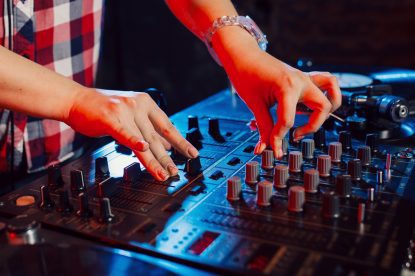
As a DJ beginner the best advice is to start with easy mixing styles. A seamless mix is what you want to master. Its all about picking the right moment in your track to start the mix and slowly bring in the 2nd track, perfectly beat matched. There’s no need to add any effects or fiddle with any extra features. Just make sure you can seamlessly transition from one to the other.
After that you can start to get a bit more creative and transition low frequencies before mid and high. Its one of the best ways to help merge the sounds of two tracks for an even more seamless mix.
Once you’ve mastered the seamless mix you can move on to more creative mixing styles. You can read my article on advanced DJ mixing styles here.
Frequency volumes really bring a mix to life, without them it’s like you’re listening to something played in 2D. They can be fiddly and frustrating when you get started, but you can’t progress if you don’t have a handle on them.
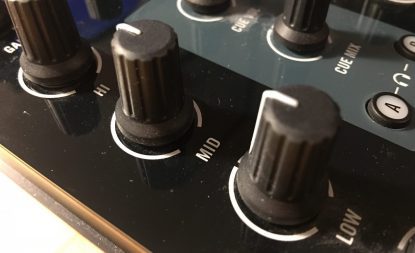
Almost all mixers will have high, mid and low frequency volumes that allow you to essentially drop out the bass-line, melodies and vocals or high percussion sounds in a fairly crude but effective way. Don’t worry if your mixer only has low and high frequency volume control, its still a useful tool for creating seamless mixes.
Low frequencies
The kick drums and bass-lines of tracks can often overwhelm or conflict with the tune thats already playing, so cutting out this frequency of the track you’re mixing in can really help create a smoother mix.
You can transition just the low frequencies of your 2 tracks by slowing bring down the low frequency volume of your primary channel and fading up the low frequency volume of the secondary track you’re mixing in.
Mid frequencies
Use this to cut out some of the riff, melodies and vocals if they’re getting in the way of your main track. Its harder to transition between the two on this as they tend to clash more, so its best to just keep your secondary track’s mid frequencies at a low volume and once you’re deep in to your mix between channels you can start to bring it back in, only when there’s no sounds to conflict.
High frequencies
One of the most noticeable sounds of any dance track is high hats, especially when mixing in a new track that has a distinctive percussion different to that of the master track.
The easiest way to remove that as you mix is to reduce the high frequency volume on your new track. You can add it back in later once your mix is fully underway.
It may sound obvious but its worth exploring. Painters paint scenes they’re interested in, photographers take photos of subjects they’re passionate about, and you as a DJ should play the tunes you love.
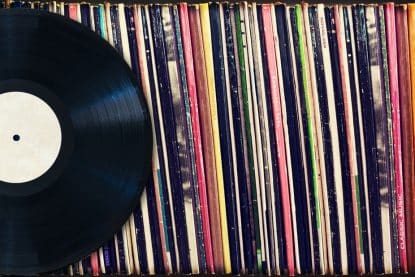 While its important to explore other musical genres to improve your DJ skills you should always have a passion for the music. So build a playlist of your favourite tracks, ones you know you love listening to again and again. Practice with these first and you’ll learn a lot faster as these are the songs you know inside out.
While its important to explore other musical genres to improve your DJ skills you should always have a passion for the music. So build a playlist of your favourite tracks, ones you know you love listening to again and again. Practice with these first and you’ll learn a lot faster as these are the songs you know inside out.
As with any passion its important to do it because you love it. No doubt there will be times when its frustrating, your mixing doesn’t go to plan, you keep messing up mixes or you’re just not feeling it. Having a playlist of tunes you love to mix will make all the difference.
Be sure to add to this playlist over time with new tracks you love.
If you wanted to become a real professional DJ, then ‘practice makes perfect’ is the phrase you need to live by. Having a daily routine that builds practice into your day is the best way to improve. That way you’ll never have to actually decide when and where to do it. Simple right?
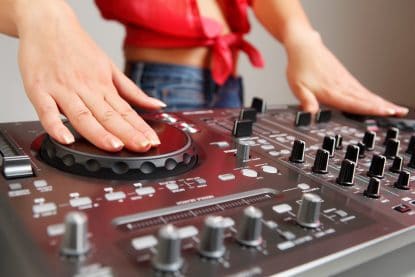
You’ll often find there’s a time of day that suits you best, not only because you can fit it around work and personal life but also because you have the most energy or highest concentration levels.
They say true masters of their crafts need to practice for at least 10,000 hours, while I don’t recommend you keep a log of all the hours you practice DJing, I can certainly agree that the more hours you put in the better you will become.
So schedule in your daily DJ mixing time. Even if its just 30 minutes, an hour is usually preferable. Have you preferred playlist ready to go, ease yourself in to more creative mixes by practicing the easy seamless ones first.
If you commute to work by train or bus then you have plenty of “quality me time” to practice your DJing. Grab some headphones and your smartphone or tablet of choice and download DJing software. You can then practice mixing on the go!
I definitely don’t recommend these apps for professional DJ setups but they are a good way to practice when you’re out and about.
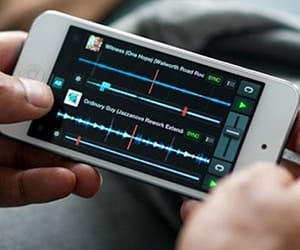 The biggest issue with them is that you have one audio source to listen to, there’s no way of beat matching and cueing your next track. Even with this limitation they are a great way to understand new tunes and to practice when to bring in the next track.
The biggest issue with them is that you have one audio source to listen to, there’s no way of beat matching and cueing your next track. Even with this limitation they are a great way to understand new tunes and to practice when to bring in the next track.
My personal favourites are djay pro and Traktor. Both very different in their approach. djay works well with spotify if you have an account while Traktor uses your local itunes music.
Over the course of the year this could add up to another month of solid practice so it’ll be well worth getting one to play with.
Every DJ’s first audience is their friends. No one expects you to be perfect straight off the bat, and nor should you expect to be. People love a good party mix too so why not record some of your sessions and give them to your friends.
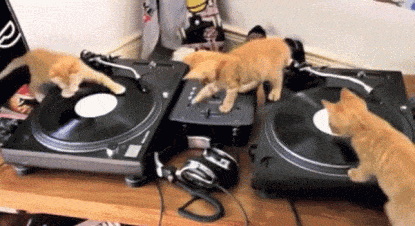 They can give you honest and friendly advice on what they thought was good and bad. Maybe your choice of tunes (or the order you played them in). Maybe a dodgy mix you were hoping they didn’t notice. Maybe the levels weren’t quite right. Your friends will always help you out so there’s no need to feel embarrassed.
They can give you honest and friendly advice on what they thought was good and bad. Maybe your choice of tunes (or the order you played them in). Maybe a dodgy mix you were hoping they didn’t notice. Maybe the levels weren’t quite right. Your friends will always help you out so there’s no need to feel embarrassed.
Record a couple of your favourite mixes and see what they think. Don’t take their feedback personally, take it seriously; then you’ll improve overnight! Knowledge is power after all.
Once you’ve bored your friends to death with your constant stream of mixes, head on over to mixcloud.com and show the world your skills. It’s easy enough to record something and upload it with the click of a button, and the feedback you get will be a great help when you want to take your skills to the next level.
Don’t expect a wealth of feedback overnight, it may take some time for your mixes to be noticed. Still its a useful place to host your mixes online and then share them on Facebook with a wider audience. Or send the links to other DJs for critiquing.
There’s no need to DJ alone, especially when you’re a beginner and trying to understand how to improve. Head to DJForums.com and sign up. It’ll put you in touch with DJs from all 4 corners of the globe.
Ideal if you want to share hints and tips, and get that little bit of extra motivation that you need to keep practicing until you get a mix you’re delighted with.
If DJing is your passion then connect with other passionate DJs. They’ll share advice on hardware, software, tunes, mixing styles and help give feedback on your mixes.
If you’re the DJ at an event, you’re the one responsible for getting everyone up and out of their seats and having a great night.
There’s no such thing as a bad crowd, just a DJ that can’t read the mood of the room. Learn this skill early on and you’ll be able to hold any sized crowd in the palm of your hand.
Here’s a few quick tips for you
Try and gauge how much energy the crowd have
You can usually tell from body language, how frenzied they may be dancing, how many people are on the dance-floor compared to previous tracks. Depending on what type of gig it is you’ll also know whether they’ve just eaten, are sober or tipsy, etc. Use this knowledge to know whether a particular track will make them dance or turn them off.
Don’t be afraid to ditch the track
You put on a tune you thought they’d love but disaster! They start leaving the dance-floor, they’re just not feeling it! What do you do!?
Well whatever you do don’t keep the track playing. Find another track quickly and get the party back on track, There’s no need to let a track no one’s in to playing for 3 or 4 minutes. It’ll kill the mood and ruin the party. Be prepared to ditch it and move on after 30 seconds. No one will mind, in fact many will be glad! It’ll get the party back on track.
The easiest way to please a crowd is to take them on a musical journey. Treat each track like stepping stones, slowly building up the energy in the room as the sounds get progressively more dark, driven, serious or happy.
 You can play around with their energy levels and slide effortlessly from one musical genre to another if you have the right stepping stones in place.
You can play around with their energy levels and slide effortlessly from one musical genre to another if you have the right stepping stones in place.
I would argue this is one of the most important jobs of any DJ. Your set should always have a narrative, a storyline taking your captivated audience from A – Z. This applies to any type of DJ too whether you’re playing to a packed and sweaty nightclub, a Sunday afternoon pool-side session or a Wedding reception. A good DJ knows how to control the crowd.
It would be awesome if you could already loop mix with 4 decks like Carl Cox, but that’s just going to happen. The guy spent thousands upon thousand of hours figuring out how to make it look that easy. Take your time, turn your weaknesses into strengths, and enjoy the ride.
Don’t try and emulate your DJ heroes from day one, it’s just not going to happen. The heroes you admire put in the hours to master the basics, and built up their musical knowledge and skills from there. You can do the same.
So you may not be able to mix like the world class pros just yet but don’t let it put you off. You can get there. If you try and take on too much you’ll never master any of the tricks of the trade. One step at a time!
If you want to practice like a pro, then you need to know what your mixes really sound like. Headphones are one area where you should splash the cash. Get a durable pair of over ear headphones and you’ll be all set.
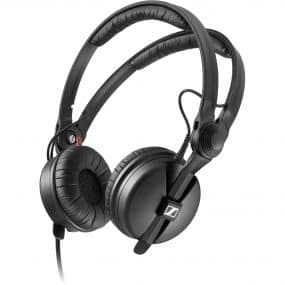 The reason I recommend this is because being able to hear your music well in any environment is key to good professional quality DJing. If you can’t hear every high hat, symbol, kick drum and riff then your mixes will suffer. Remember your ears are the primary source for understanding the quality of your DJ-ing, so make sure they can hear every beat.
The reason I recommend this is because being able to hear your music well in any environment is key to good professional quality DJing. If you can’t hear every high hat, symbol, kick drum and riff then your mixes will suffer. Remember your ears are the primary source for understanding the quality of your DJ-ing, so make sure they can hear every beat.
I can highly recommend Sennheiser as they’ve been my go to brand for DJ headphones for decades now. I own the HD 25 plus which you can check out here for the latest prices.
Once you feel you know every function, knob, dial and fader of your mixer and can use it to its highest intent, then its time to upgrade. There’s really no need before this point as you haven’t mastered the DJ gear you have.
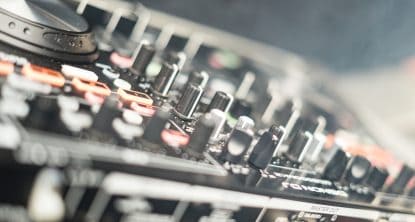 If you feel confident you can take it to the next level then its time to start searching for something that can add creative flare to your DJ sets. You’ll know by this point what type of DJ you want to be, a scratch mixer, a loop master, a seamless old school master. Also what genres you’ll want to mix too.
If you feel confident you can take it to the next level then its time to start searching for something that can add creative flare to your DJ sets. You’ll know by this point what type of DJ you want to be, a scratch mixer, a loop master, a seamless old school master. Also what genres you’ll want to mix too.
Armed with this experience and knowledge you’ll know what type of DJ equipment will suit you best. I’ve written an article all about which DJ mixer is right for you. Well worth a read.
Bands having jamming sessions and DJs can jam too in the form of back-to-back DJ sessions. It’s all about learning knew tricks, and teaching each other subtle little variations. Besides its fun to mix with other DJs and you can watch someone close up to see what they do differently to you.
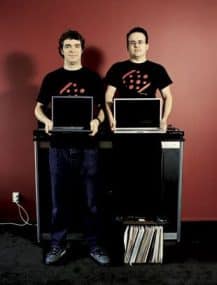
Some DJs excel in this environment in fact there’s numerous DJ duos that work professionally together as it can add a real twist and competitive element to your DJ-ing style.
So put the word out locally, find local DJs and meet up. Share your experiences, jam together and learn from each other.
VU meters are the volume level displays on your mixer. While it may look fun to push them in to the red they are trying to tell you something important, your volumes are too loud!
Remember you’re trying to seamlessly mix tracks together, not blow speakers and clash sounds!
 Make sure your volume levels are not peaking in the red, give yourself some wiggle room. There are often gain controls which can lift up quieter tracks, but remember you don’t want to distort the beautiful sounds of your tracks, just mix them well.
Make sure your volume levels are not peaking in the red, give yourself some wiggle room. There are often gain controls which can lift up quieter tracks, but remember you don’t want to distort the beautiful sounds of your tracks, just mix them well.
Also keep an eye on your master volume. Sometimes there’s a separate VU meter for that. Keep it out of the red and your sound quality wont be distorted. Your audience will love you, your mix recordings will sound great and the venue owner wont hate you for ruining his sound system.
Counting beats is one of the fundamental skills that every DJ needs to have. Mixing seamlessly doesn’t mean much if your tunes are not on the same beat. Most dance tracks follow 4 beat pattern. 4 bars of 4 beats making 16 beats in total before usually something changes, a break occurs or a new sound is brought in (or taken away).

Make sure you can count these beats and bars, be aware of their timing and only launch your new track in to the mix when the moment is right. Otherwise it’ll just sound weird.
 Your first gig is a nerve wracking time that’s also super exciting. Keep it small by offering to do a friend’s party. That way there won’t be too much pressure, and you’ll already be able to read the crowd! You make use of all the tips you’e learned here and treat it like another practice session but this time with an audience.
Your first gig is a nerve wracking time that’s also super exciting. Keep it small by offering to do a friend’s party. That way there won’t be too much pressure, and you’ll already be able to read the crowd! You make use of all the tips you’e learned here and treat it like another practice session but this time with an audience.Your friends will appreciate the free DJ and you get to build up confidence in front of a crowd. Its a great way to practice many of the tips above like reading the crowd and controlling them too. Plus your friends wont mind if you try a few tricks and they don’t land first time. You’ll get there with practice and confidence building.
Not many DJs do this, but its a good piece of DJ-ng advice for any beginners. You can learn so much just by videoing your practice session and watching how well you cue up tracks prepare for the mix and of course watch how you transition.
All the top sportspeople do video analysis, and as you’re practicing something that requires high levels of coordination and timing, you should do the same.
You could also live stream your mixes on YouTube and Facebook if you really wanted to. But I would stick to the video analysis aspect and note down any ways you can improve. You can also look at DJs on Youtube to analyse their mixing techniques.
Everyone can tell a bad setup when they hear one, but most people don’t know how to fix it. The chances are that you won’t have everything perfect when you first take it out of the box. Here’s a mantra to apply to almost anything in life.
Iterate, practice, and improve.
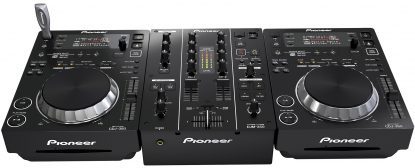 This means break down your tasks and skills in to manageable and analysable chunks. Practice at them repeatedly and improve them over time. This can be applied to your DJ setup too.
This means break down your tasks and skills in to manageable and analysable chunks. Practice at them repeatedly and improve them over time. This can be applied to your DJ setup too.
Whether its trying new filter and effect settings, to checking the quality of recordings and volume levels. Adding hot-cues and hot loop markers to your tunes. Creating new DJ set lists and playlists for all sorts of occasions.
There’s always something you can do to improve your DJ-ing, even as a beginner.

If you start waving your hands about, grabbing dozens of glow sticks, and try to go all Fat Boy Slim then it’s just not going to work if you’re a novice DJ. There’s nothing wrong with being a beginner, so embrace it.
Leave your ego at home and focus on what you can do. The crowd will love you for it all the more.
Concentrate on your mixing skills, your ability to read the crowd and control their mood. No amount of bravado and hand waving while DJ-ing will win a crowd over, your skills as a DJ will.
Warmup sets are so important. Athletes warmup, singers warmup, and DJs should warmup to. Get your rhythm going, put yourself at ease, and double check you’ve not made any stupid mistakes with your setup. You’ll thank yourself for it once the party gets started.
Check your playlists are ready, your laptop is working just fine. If you have to use your own hardware than make sure everything is working correctly.
But most importantly get in the mood to DJ. Grab a few of your favourite tunes, crank up the home sound system and perform a few mixes just for the fun of it. This helps me no end and always puts me in the right frame of mind when to DJ.
 Building a following on social media is a great way to get your mixes out there so that you can hear how to make them even better. Don’t be shy or overly precious, just put something up and see what the world thinks. It’s what the pros do every time they release something new!
Building a following on social media is a great way to get your mixes out there so that you can hear how to make them even better. Don’t be shy or overly precious, just put something up and see what the world thinks. It’s what the pros do every time they release something new!As you’re no doubt aware the likes of Twitter and Facebook are a haven for trolls. Expect short sharp and sometimes negative responses, even if everyone else thinks your mix is great.
Grab yourself a twitter account, post regularly, build up a following and share your mixes. If anything it serves as a great way to see how far you’ve come.
 When you’re a beginner DJ its much easier to nail every mix if you’re sober and awake! So before a gig make sure you get plenty of sleep and drink water at the party. Trust me as tempting as it may be to drink alcohol it wont do your DJing any good and you’ll appear less professional to your clients. If you want more gigs do the best job you can.
When you’re a beginner DJ its much easier to nail every mix if you’re sober and awake! So before a gig make sure you get plenty of sleep and drink water at the party. Trust me as tempting as it may be to drink alcohol it wont do your DJing any good and you’ll appear less professional to your clients. If you want more gigs do the best job you can.DJing is all about bringing the party to life, but you’ve got a job to do. You’re a musician that’s trying to juggle a dozen things at once, so keep your focus and enjoy a drink once your set is over.
If you want an amazing recorded mix, then you need to accept that doing it live is probably not the best idea. Of course the whole party or club loved it, but you can always improve something and when you’re beginning you’ll often find your cleanest mixes were at home in perfect acoustic surroundings.
So I recommend you only share home made mixes. This also reduces the resources needed on your laptop as recording while playing can occasionally cause jitters.
 It might seem a bit odd coming up with a name when you’re still practicing at home, but why not? Bands do it, so why shouldn’t you? It’s the best way to build a reputation and get yourself noticed.
It might seem a bit odd coming up with a name when you’re still practicing at home, but why not? Bands do it, so why shouldn’t you? It’s the best way to build a reputation and get yourself noticed.Some DJs like to use a word or phrase as their DJ name. Others just think their name is dull and want a better “stage name”. Remember if you’re serious about going pro then you gotta have a brand.
Pick a name you like, thats easy to remember and stick with it. Use it on social media, branding, soundcloud and mixcloud accounts, a website, the works. Its your name so own it!
You’re not going to be a god on the deck overnight, and that’s fine. But what you can do is take a look at how famous DJs do their thing, and see if you can pick up some of their techniques. There’s no harm in having someone you look up to and aim to model yourself on. Just don’t expect to turn into them straightaway!
Tip: Search for “Mixmag sessions” on YouTube and you’ll find lots of well filmed DJ sets to enjoy and analyse.
Whether it’s going to nightclubs and analysing the DJ’s mixes, or watching videos on YouTube of famous DJs, find a way to watch and more importantly listen to what they’re doing.
Make notes, try to decipher what makes them a good DJ. Remember they are most likely streaks ahead of your capabilities so don’t expect miracles, but understand what the greats of this world do will help you understand what you need to do to become that good.
There are numerous ways to DJ these days and all of them are valid. Don’t let people tell you otherwise. I adore my Technics SL1210’s and have plenty of experience with CDJs and digital controllers too. My mixing style and skill level is different for each allowing different creativity and accuracy. We all have a preference.
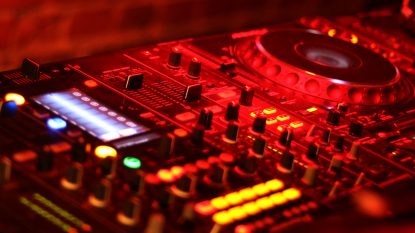
So its important to find your own. See which one suits you best. You may find that you love the physical feel of vinyl with digital timecode records, or the warmth and instant analog appeal of vinyl recordings. You may find that the jog wheel control of CDs suits you best or you may love the digital looping and controlling that a modern digital controller can offer.
Whatever you prefer, go with it, master it and you go progress from beginner to expert DJ in no time.
No one ever made a party insane by reading the manual, but you still need to do it. Not only does it give you a better understanding of all of its functions and features, but it also will teach you how to look after your DJ equipment. This usually includes things like
- How to clean the faders and knobs
- Where the fuse is housed within the unit (if there is on)
- What type of fuses you need to keep a stock of
- Recommend equipment that works best with your hardware
- Recommended headphone specifications
Things like dust covers, and replacement cross faders are great investments if you want to get the most out of your kit and make it last the longest. It’ll also keep its value when you want to sell it and upgrade to more professional equipment.
More great DJing help and advice
There are plenty of other ways to improve your DJ skills, check out these articles.
